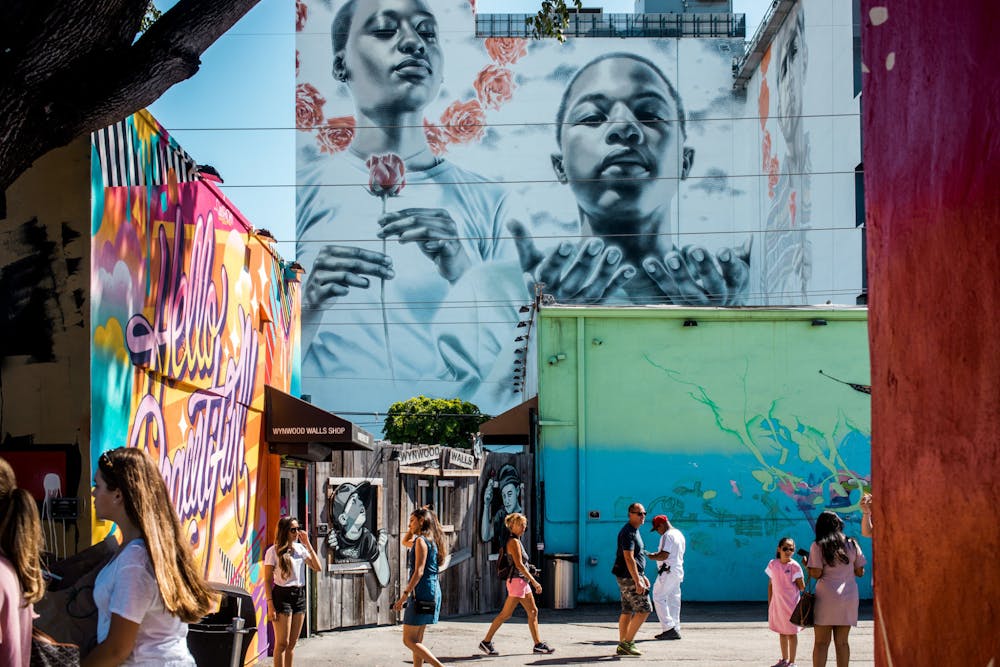It’s “Bienvenidos a Miami” (welcome to Miami) and not “bienvenidos a Fort Lauderdale,” in Will Smith’s 1997 hit, for a reason. The two cities might as well be two different countries.
In fact, Miami locals consider the city to be completely unique to Florida and even America, as a whole. Miami is Miami.
Yet, Miami outsiders frequently fail to grasp this reality, often conflating the two cities. 2024 spring break plans in “Miami” were really beach days in Fort Lauderdale and nights spent at The Wharf or on Las Olas Boulevard. It was not until I left my Miami bubble to step foot in Durham, N.C., that I first encountered the drastic misconception that Miami and Fort Lauderdale are one in the same.
To a Miami native, like myself, the idea that these two cities could be equated was baffling. Fort Lauderdale could greet me with the feeling of warm sun, but only my city can welcome me home with the smell of buttery tostadas (toast) and taste of a sweet batido de fresa (strawberry milkshake) from La Carreta.
In Miami, warm Cuban bread, enveloped in a paper bag with the Cuban flag, is a grocery store staple. It’s a city where the grocery store shelves are lined with the Badia Mojo Marinade and GOYA sazón that will be used to prepare family meals. This city is run on café cubano and croquetas, whose rich invigorating scents greet visitors and welcome home locals upon arrival at the bustling airport. Here, every local resonates with America’s first bilingual sitcom ‘¿Qué Pasa, USA?,’ which perfectly encapsulates the city’s soul.
In this city, standard English is the first thing left behind.
Spanish isn’t just the primary language in the 305: it's a way of life. From the colorful billboards that line the avenues to the friendly banters of your Spanish-speaking Uber driver, the city pulses with the lively cadence of the language. Here, nearly 70% of residents embrace Spanish as the primary language spoken at home, while only 25% of residents are native English speakers, according to recent United States Census figures.
This Spanish-speaking hub reflects a unique demographic, with 72.3% of residents coming from Hispanic or Latino origin and over 90% of foreign-born residents coming from Latin America, per the same census figures.
The mass exodus of Cuban refugees fleeing Castro’s regime in the 1960s and the Mariel boatlift of 1980, along with Colombian drug lords operating out of Miami and violence in Nicaragua, Colombia and El Salvador throughout the 1980s and 1990s, quickly named Miami “the capital of Latin America.”
As neighborhoods like Little Havana and Little Managua flourished, Miami became a mosaic of Latin flavors, sounds and traditions. Latin America became embedded into the city’s energy and culture. Even the talk of the city — a unique blend of Spanish, English and Spanglish — reflects the widespread influence of its large Latin American diasporas.
Just last year, the city garnered national attention after a study published by Phillip Carter recognized a “Spanish-influenced lexical phenomena” known as “Miami Dialect” or “Miami English.”
The distinctive local dialect evolved from direct translations of Spanish phrases, like gracias a Dios (“thanks God”), has molded Miami culture and life.
“In Miami, people don’t ‘get’ in line, they ‘make’ the line (from the Spanish ‘hacer la fila’)...They don’t ‘get out’ of their cars, they ‘get down’ from their cars (‘Bajarse del carro’),” writes Miami local Raquel Coronell Uribe.
While Miami pulsates with Latin energy, the city of Fort Lauderdale, just a few miles away, boasts a “relaxed” and “suburban feel” that draws in several tourists.
In Fort Lauderdale, you won’t find Spanish or Spanglish interjected into everyday conversation, as the city’s linguistic landscape is dominated by English with little influence from Latin American dialects.
Nearly 70% of Fort Lauderdale residents speak only English with Spanish being spoken only by 17.46% of residents, according to the United States Census Bureau.
The city’s cultural and linguistic landscape reflects demographics that greatly differ from Miami's melting pot of Latin American cultures. With a smaller Latin American influence, Fort Lauderdale is home to a relatively diverse population, where only 19.8% of residents are Hispanic and the majority identify as “white alone” per census figures.
Miami thrives as “America’s most Latino city,” while Fort Lauderdale embraces its own coastal charm, offering visitors and residents alike a different slice of South Florida as “the Venice of America”.
Fort Lauderdale “enchants with its intertwining canals and quiet beaches,” but it's “a gentle breeze” compared to Miami’s unrelenting energy and Latin flair, per tourists and travel guides.
Just because they’re neighbors, doesn’t mean they’re the same. Every city has its own allure and individual identity formed by linguistic nuances, cultural influences and demographics.
Miami is Miami. Fort Lauderdale is Fort Lauderdale. Y punto (end of story).
Get The Chronicle straight to your inbox
Signup for our weekly newsletter. Cancel at any time.

